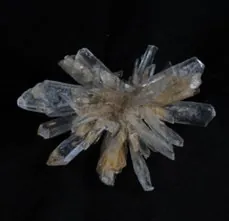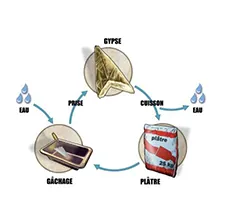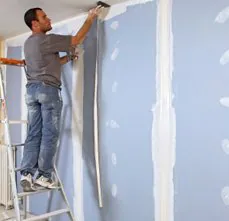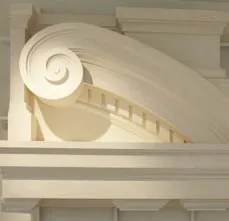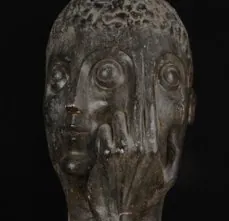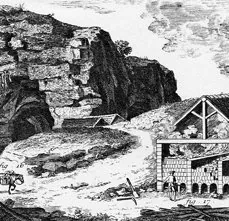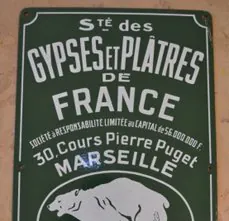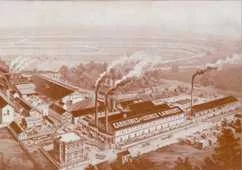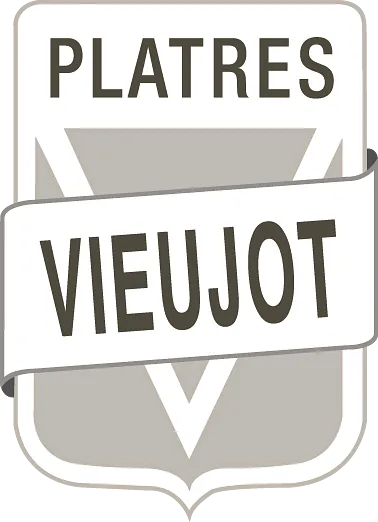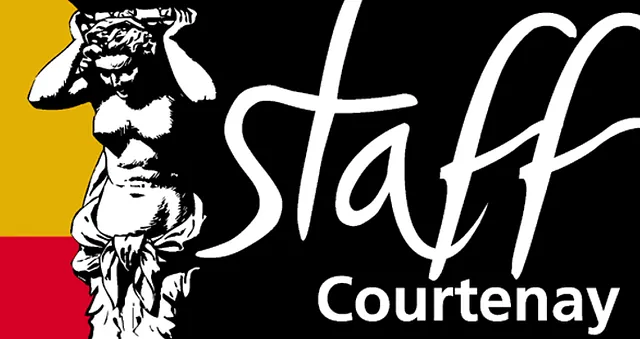GYPSUM PLASTER
Gypsum plaster has been used for thousands of years but remains a surprisingly modern material.
GYPSUM
In geological terms, gypsum is a hydrous calcium sulfate, an evaporite mineral; its chemical formula is CaSO4 2H2O. Gypsum deposits tell the history of the Paris sedimentary basin, which has shaped the region's landscape. The gypsum quarry on the slopes of Cormeilles, roughly 10 kilometres north-west of Paris, had been a landmark for a century, but is currently being reclaimed, as mining continues underground.
FROM GYPSUM TO PLASTER PRODUCTS
After quarrying, the gypsum is crushed and fed to kilns. The gypsum is dehydrated by heating to about 130°C, to drive off the chemically combined water, and then ground to a fine powder, like plaster of Paris.
Gypsum plaster, in powder form, is ready to use by adding water. Its multiple uses include applications in building construction, decoration, casting and molding, agriculture, and water treatment. Industrial plasters and building plasters may include chemical additives, and are used to produce gypsum board, gypsum blocks and rendering materials.
BUILDING CONSTRUCTION, DECORATION, AND ARCHITECTURAL ORNAMENTS
Plasterers' skills, techniques and tools were traditionally handed down from one generation to another. While gypsum board (drywall) was introduced in the United States in the late 19th century and gained in popularity through the first half of the 20th century, French building construction, with lath and plaster walls and ceilings, remained largely unchanged until 1960. The introduction of plasters with longer working times, prefabrication, and mechanical (projection) plastering have changed how plaster is used in construction.
Heritage of Plaster Coatings in Île-de-France
This series (in French) examines plaster-rendered facades in the Greater Paris region
- Newsletter No. 1 January 2017
- Newsletter No. 3 September 2017
- Newsletter No. 4 January 2018
- Newsletter No. 6 February 2019
"Petit guide pour reconnaître et restaurer une façade en plâtre"
(Short guide on how to recognize and restore a gypsum plaster facade)
Produced by LRMH (Laboratoire de Recherche des Monuments Historiques) / French Ministry of Culture
This booklet reviews the history of gypsum plaster in the greater Paris area, how to recognize these facades, typical disorders, and how to restore them. (The cover shows the historical schoolhouse that was the first home of the museum in Cormeilles.)
"Plâtre. sols et couvrements intérieurs. Du XIIIe au XIXe siècle"
(Plaster. Floors and interior renders. From the 13th to the 19th century)
Author: Christelle Inizan. Editions du Patrimoine, 2017. Download order form.
SCULPTURE
Sculptors have used gypsum plaster since ancient times; one of the most traditional casting techniques involves plaster molds that are broken after the casting hardens (the waste mold method). Plaster can also be sculpted directly by carving or modeling, or used with other media.
- La poterie de la Montagne à Saint-Honoré-lès-Bains (Nièvre) - in French
- Le monument funéraire de Pierre Mocquot à Aix-en-Othe (1850) - in French
- A Londres, des moulages en plâtre du XIXe siècle - in French
- Des oeuvres en plâtre dans deux musées de Bourgogne : Saulieue et Semur-en-Auxois - in French
- Yvonne Duttile, sculptrice (1883-1979) - in French
- La République et ses masques. Culte du grand homme et culture matérielle (de la Ie à la Ve République) - in French
by Jonathan Barbier and Bruno Bertherat (with kind permission of the authors), Cahiers Jaurès 2016/1 (n° 219-220), Société d'Etudes Jaurésiennes, 2016, pp. 119-143. - La dame au chapeau. La photographie des femmes mortes en France à l'époque de Bertillon - in French
by Bruno Bertherat (with kind permission of the author), Corps, 2013/1, CNRS Editions, 2013, pp. 97-106. by Carla Tomas, Museu da Lourinha (Portugal)
THE SURREALIST SCULPTOR GEORGES BOULOGNE
- Le sculpteur Boulogne (1926-1992) (in French)
- La double image de Boulogne (1953-1964) (in French)
- La Main 3 Yeux (1953) (in French)
- Rainier de Monaco (1955-1958) (in French)
- Le portrait sculpté de Jean Rostand (1958)
- Une oeuvre du sculpteur Boulogne à Saint-Nazaire : "Le Christ guérissant un malade" (1959-1960) (in French)
- Quand Dali posait pour le sculpteur Boulogne (1961-1963) (in French)
- Les origines guadeloupéennes du sculpteur Boulogne (1650-1960) (in French)
GYPSUM PLASTER IN HISTORY
Plaster has been a known material since ancient times around the Mediterranean Basin. Its use has been documented in France since the Gallo-Roman period, particularly in the Paris region and precisely in Cormeilles-en-Parisis.
- Pierre Chazet, maçon du Limousin à l’île-de-France (XIXe siècle) - in French
GYPSUM IN FRANCE
The Paris basin accounts for over 60% of gypsum deposits in France, and many locations—including Montmartre in Paris—continue to show traces of what was once a major industry.
There are also vestiges of gypsum activity in other regions of France—including Provence, the Pyrenees, Burgundy, the foothills of the Alps.
- Des fours à plâtre dans Paris (1765-1800) (in French)
- Les ports au plâtre. Le commerce du plâtre sur la Seine et l'Oise au XIXe siècle (in French)
- La grève des plâtrières en 1909 (in French)
- Placoplatre et autres histoires industrielles - en vente au musée (in French)
- Introduction : Placoplatre et autres histoires industrielles (in French)
- Les carrières à Taverny (Michel Dessanne et Lionel Urbain) - Préface de Vincent Farion (in French)
- La plâtrière d'Armoy (Haute-Savoie) (in French)
- La Renarde - Webfeuilleton. (in French)
A family investigation in 12 episodes, a journey into memory and territory. The story unfolds from the 19th century to the present day between Seine-et-Marne, Paris, Germany, and the Swiss Jura. The Plaster Museum is a partner in this series with contributions from Vincent Farion and Jacques Hantraye, providing historical insights into the history of plaster in Seine-et-Marne.
Learn more (in French):
Les Articles du Musée du Plâtre (published by the Museum, download):
HISTORY OF THE CARRIÈRE LAMBERT
Founded nearly 200 years ago by the Lambert family, the open-cast quarry at Cormeilles-en-Parisis became a major site for the plaster and materials industry in the 20th century.
- La grève des plâtrières en 1909 (in French)
- L'effort de guerre des usines Lambert en 1914-1918 (in French)
- Lambert dans les années 1920 (in French)
- 1924, quand la carrière et l'usine Lambert ouvraient leurs portes (in French)
- Carrière de Cormeilles, historique de la mécanisation (XXe siècle) (in French)
- Si la carrière m'était contée - en vente au musée (in French)
- Placoplatre et autres histoires industrielles - en vente au musée (in French)
- Introduction : Placoplatre et autres histoires industrielles (in French)
With support from:
Copyright 2024 | MUSÉE DU PLÂTRE | All rights reserved | Legal Notice

